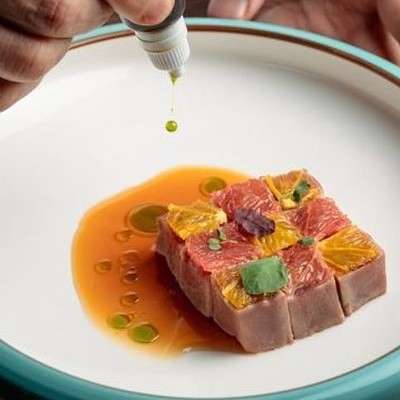A few years ago I spent some time in Korea, and I absolutely fell in love with the food. Things I thought I wouldn't enjoy--kimchi with fish for breakfast, noodles made of mung bean jelly, fried squid on a skewer--are dishes I now crave when I'm feeling nostalgic for my time in that beautiful country.
Many more popular dishes like bulgogi beef and kimchi pancakes are easy to find in Houston, and they're definitely good enough at many places to satisfy my cravings. Korean food has even started going more mainstream with the addition of Korean braised goat and dumplings (a play on traditional ddukbokki) at Underbelly and the upscale Korean and Japanese restaurant Nara in West Ave. But there were a few more obscure dishes--and one in particular that I hadn't been able to locate among the hole-in-the-wall Korean joints up and down Long Point Road where most of them are congregated.
Until now.
I'd been to Il Me Jung several times, but I never really read through the menu, choosing instead to point to the first photo of ruddy jjigae (Korean stew) that struck my fancy rather than wade through pages of dishes I didn't recognize and the Korean-speaking waitresses couldn't explain.
Recently, though, I decided to do my due diligence as a food writer and examine the whole darn menu. And there, at the bottom of a back page, I saw something I hadn't seen since I was in Korea: Al-bap.
It's considered a type of bibimbap, a relatively well-known rice dish served in a hot stone bowl that cooks its contents as they're stirred around inside. Bibimbap, which literally means "mixed rice," is more complicated than al-bap, which means "egg rice." It almost always has julienned cucumber and zucchini, daikon, mushrooms and soy bean sprouts as well as tofu or meat and a raw egg that cooks and melds the disparate ingredients together with the rice.
Al-bap is much more simple. It's still served in a super hot stone bowl, but instead of all the mixed vegetables, there's just a bit of kimchi buried under rice at the bottom. On top of the rice is four different kinds of fish roe clumped together by color and sprinkled with a bit of pickled yellow radish and sesame seeds.
When the bowl arrives at your table, it's so hot you can hear it sizzling. You can either dive in with the chopsticks and hurriedly mix everything together or do what I do, which is wait a few minutes to ensure the rice around the edges gets toasty and brown. I love the crunch of the toasted rice with the salty pop of the roe.
It's not a very complicated dish. The rice tastes like a toasted grain, the roe, though different colors, tastes mostly like briny seafood and the bit of kimchi in the bottom is vinegary and ever-so-slightly spicy. Unlike the more popular bibimbap, al-bap makes used of few very high quality ingredients.
One bowl is more than enough to feed one person, especially with the multiple plates of banchan or side dishes that come with every meal. If you want easy Korean food here, order the bulgogi beef (you can cook it at your table) or the bibimbap. But if you want something a little more festive, give the al-bap a try.





